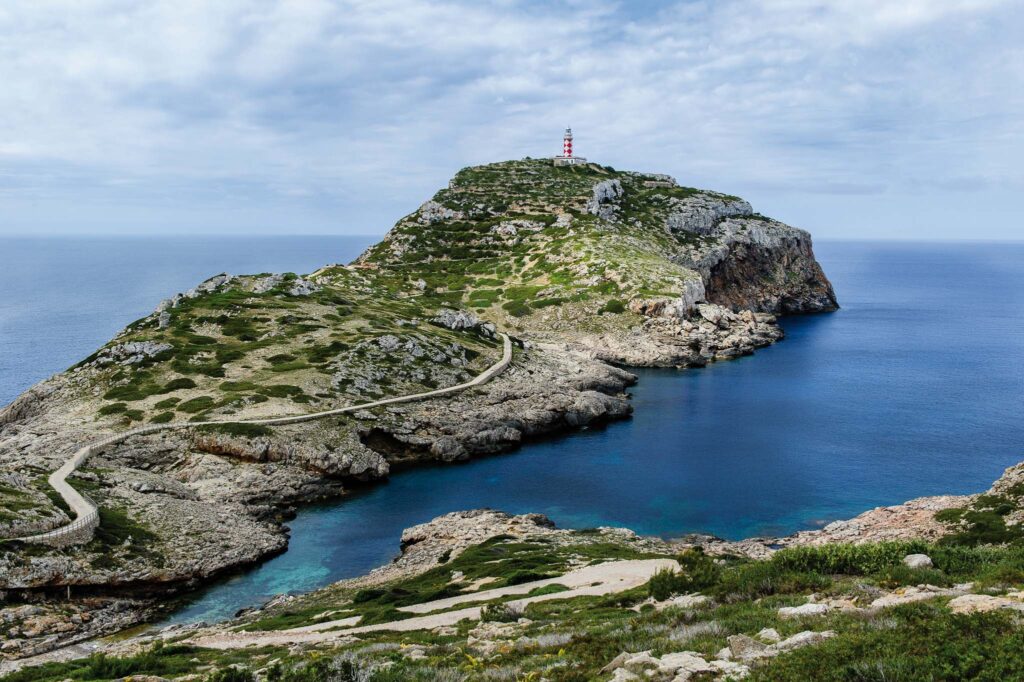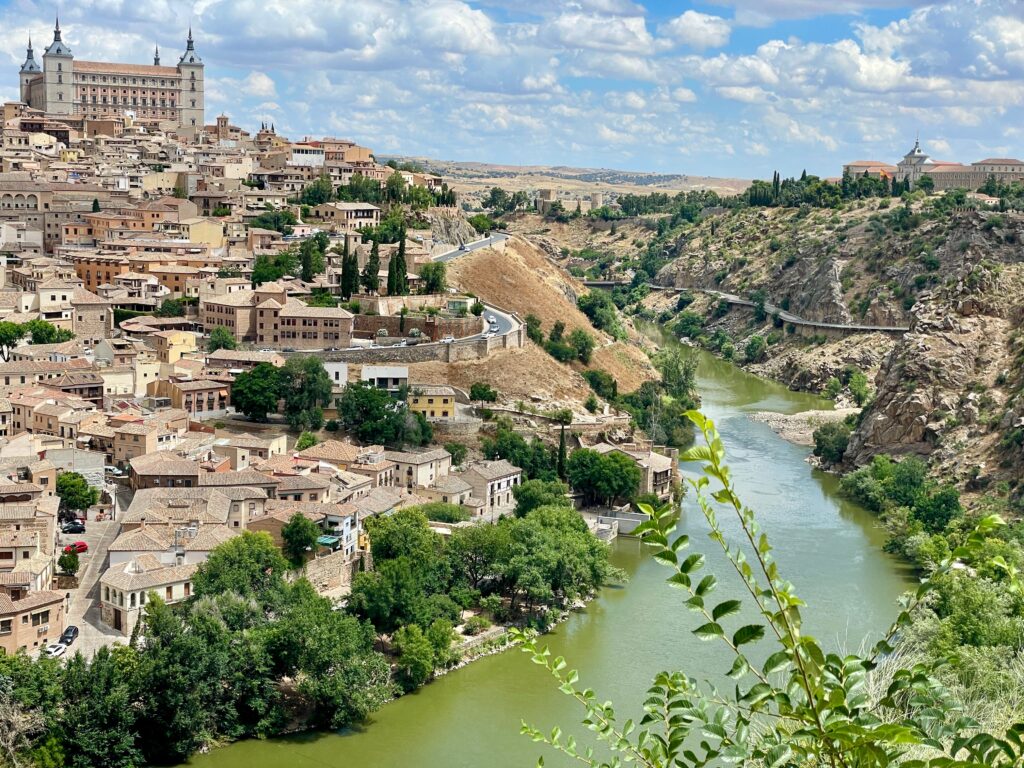Cabrera is an enchanting archipelago in the Balearic Islands of Spain. It sits just south of Mallorca and remains one of the most unspoiled national parks in the Mediterranean. Thanks to its crystal-clear waters, rich marine life, and pristine landscapes, Cabrera has become a top choice for nature lovers, eco-tourists, and anyone seeking an off-the-beaten-path experience. This in-depth tourist guide will help you plan your journey, explore the best activities, and discover the magic of Cabrera.

Introduction to Cabrera and Its Unique Appeal
A Protected National Park
Cabrera forms part of the Cabrera Archipelago Maritime-Terrestrial National Park, established in 1991. Its protected status keeps commercial development at bay. As a result, you’ll find the island mostly untouched by mass tourism. Travelers are drawn here for the tranquil atmosphere, immaculate beaches, and vibrant underwater ecosystems.
Ecological Significance and Wildlife
The waters around Cabrera offer excellent visibility for snorkeling and scuba diving. Seagrass meadows, colorful fish, and other marine species thrive here. The island also hosts a rich birdlife, including the Balearic shearwater and Eleonora’s falcon. Dolphins and sea turtles sometimes make an appearance as well. The area’s ecological importance is reflected in strict regulations that limit visitor numbers, keeping the balance between tourism and conservation.
A Peek into History
This idyllic archipelago has a long and varied history. Pirates once used its coves, while different conquering forces built watchtowers and fortifications. You can still explore a 14th-century fortress known as the Castell de Cabrera. It once protected the island against maritime raids. During the Napoleonic Wars, Cabrera served as a prison island for thousands of French soldiers. These historical elements provide a deeper layer of intrigue for visitors interested in more than just sun and sea.
How to Get to Cabrera
Boat Tours from Mallorca
You can only reach Cabrera by boat. Boat tours usually depart from Colònia de Sant Jordi on Mallorca’s southern coast. Some tours also leave from the city of Palma, but most travelers find Colònia de Sant Jordi more convenient. The journey typically takes around 40–50 minutes, depending on the sea conditions.
Organized Excursions and Permits
Since Cabrera is a protected national park, you must secure a permit or join an authorized excursion to visit. Most boat companies arrange these permits for you. There is a daily visitor limit, so booking ahead is recommended. Organized excursions often include guided tours of the island, stops for swimming and snorkeling, and short hikes to must-see spots like the castle.
Best Time to Visit Cabrera
Ideal Weather Conditions
The best time to explore Cabrera is between late spring and early autumn, when temperatures are warm and the Mediterranean Sea is calm. May and June provide mild weather and fewer crowds. July and August see higher temperatures and more visitors, while September offers slightly cooler days and good visibility for water-based activities.
Avoiding Peak Tourist Season
Try to visit on a weekday during shoulder months if you want fewer tourists around. This is especially true if you love photography or seek a serene natural environment. The restricted visitor quota means Cabrera never feels too crowded. However, you’ll still notice a difference in the high season when daily boat trips are in greater demand.
Top Attractions and Activities in Cabrera
The Legendary Blue Cave (Cova Blava)
One of the island’s most famous features is the Cova Blava, or Blue Cave. It’s accessible by boat, and you can swim inside on calm days. Sunlight illuminates the water, creating a vibrant blue glow that seems otherworldly. Plan this stop during midday, when the sunlight is at its strongest for the most striking color display.
Castell de Cabrera
Overlooking the main harbor stands the Castell de Cabrera, a fortress dating back to the 14th century. Climb the steep path to reach the top, and you’ll be rewarded with panoramic views of the archipelago and the turquoise sea. It’s a short but worthwhile hike that adds a historical dimension to your island adventure.
Hiking and Walking Trails
Cabrera boasts well-marked hiking trails that meander through undisturbed landscapes. These paths allow you to see native flora, such as juniper and mastic trees, and perhaps spot some lizards or migrating birds. The main route runs between the port area and the castle, with a few detours to scenic lookout points.
Snorkeling and Diving Adventures
The marine reserve around Cabrera teems with fish, corals, and underwater vegetation. Snorkeling tours are popular and frequently included in boat trip packages. For certified divers, scuba diving opportunities abound. You’ll likely spot grouper, barracuda, and octopus, especially near rocky formations. Dive centers in Mallorca can organize specialized excursions if you prefer an in-depth underwater exploration.
Bird-Watching Opportunities
Bird enthusiasts flock to Cabrera for its impressive seabird colonies. You might see rare species like the Balearic shearwater gliding over the sea. You’ll also notice cormorants, Audouin’s gulls, and Eleonora’s falcons nesting along the rugged coast. Bring binoculars and a camera if you’re eager to capture these moments.
Beaches and Coastal Treasures
Sa Platgeta
Sa Platgeta is the most accessible beach near the harbor. It features fine sand and shallow waters that are perfect for a quick dip. Despite its proximity to the main landing area, it never feels crowded due to visitor restrictions. This simplicity makes it a favorite spot for families or anyone who wants to relax after touring the island.
Secluded Coves
Away from Sa Platgeta, Cabrera’s shoreline includes more secluded coves that can only be approached by boat or via hiking trails. These spots offer an intimate setting where you might be the only visitor. Enjoy the clear water, the soft lapping of waves, and the gentle breeze. Remember to leave no trace behind to preserve Cabrera’s natural state.
Practical Tips for Visiting Cabrera
Packing Essentials
Sun Protection: Bring sunscreen, sunglasses, and a wide-brimmed hat. There’s not much shade on the island.
Proper Footwear: Wear sturdy shoes or sandals suitable for hiking and rocky surfaces.
Drinking Water: Bring enough water to stay hydrated. The island has limited facilities.
Conservation Guidelines
Cabrera is a protected national park. Visitors must follow strict conservation rules:
Avoid picking plants or disturbing wildlife.
Do not litter or leave behind plastics.
Stick to marked trails.
Respect the daily visitor limit.
By adhering to these guidelines, you help sustain Cabrera’s ecological balance for future generations.
Travel and Accommodation
Cabrera does not have hotels or large commercial accommodations. Most visitors come for a day trip from Mallorca. If you desire an overnight stay, you can apply for a special permit to camp at a designated spot. Contact the national park authorities well in advance, as places are extremely limited and often booked out.
Culinary Delights Near Cabrera
While the island itself has minimal facilities, you can sample local Majorcan cuisine in Colònia de Sant Jordi or Palma before and after your excursion. Look for these Balearic specialties:
Pa amb oli: Rustic bread with tomato, olive oil, and sea salt.
Arròs Brut: A hearty rice dish with vegetables and meat.
Sobrasada: Spicy Balearic sausage made from local pork.
Ensaimada: A spiral-shaped pastry dusted with sugar, perfect for breakfast.
Cabrera FAQs
1. Is Cabrera suitable for families with children?
Yes, Cabrera can be a family-friendly destination, especially for older children who love nature. Young kids enjoy spotting fish in clear waters and exploring the castle. However, be mindful of the limited facilities on the island.
2. How long should I spend on Cabrera?
A day trip is sufficient for most visitors. You can hike to the castle, swim at Sa Platgeta, snorkel in designated areas, and enjoy the peaceful setting. If you have a special permit to stay overnight, you’ll have more time to explore hidden coves and savor the island’s serene ambiance.
3. Can I visit Cabrera during winter?
Yes, but weather conditions can be less predictable. Boat services might run with reduced frequency or be canceled if the sea is rough. The island can still offer a tranquil experience for adventurous travelers during the cooler months.
4. Do I need a guide to visit Cabrera?
You do not necessarily need a guide if you’re comfortable exploring on your own. However, guided tours enhance your understanding of Cabrera’s ecology and history. Boat tours usually include a knowledgeable guide who highlights the island’s unique features.
5. Are drones allowed on the island?
Generally, drone use in protected areas is restricted or requires special authorization. Always check local regulations with park authorities or your tour operator before attempting to fly a drone.
6. Is fishing permitted in Cabrera’s waters?
No, fishing is banned in most parts of the marine reserve. The national park’s main goal is to protect biodiversity. Fines apply to unauthorized fishing activities.
Final Thoughts and Analysis: Why Cabrera Is a Must-Visit
Cabrera stands out among the Balearic Islands for its unspoiled natural beauty and strict conservation policies. It offers an intimate connection with nature that’s hard to find in more commercialized destinations. From the serene hiking trails to the tranquil coves, every corner of Cabrera exudes a sense of peace. The experience is accentuated by the island’s unique history, pristine underwater world, and carefully preserved ecosystems.
If you yearn for an offbeat adventure, Cabrera delivers. Days here revolve around swimming in turquoise waters, exploring centuries-old fortifications, and marveling at vibrant marine life. Strict visitor limits prevent overcrowding, allowing you to appreciate the archipelago’s splendor in its most authentic state. For travelers eager to discover a hidden corner of the Mediterranean, Cabrera offers an unforgettable journey filled with natural wonders and cultural resonance.
Plan Your Cabrera Trip Now
Book Early: Secure your boat trip tickets and permits in advance.
Pack Smart: Bring sun protection, water, and comfortable footwear.
Respect Nature: Preserve the fragile ecosystem by following park rules.
Cabrera’s treasures await those who crave a mindful and immersive vacation. Embrace the clear waters and raw landscapes, and you’ll leave with memories that last a lifetime. Make time for this Balearic jewel on your next Mediterranean itinerary.

